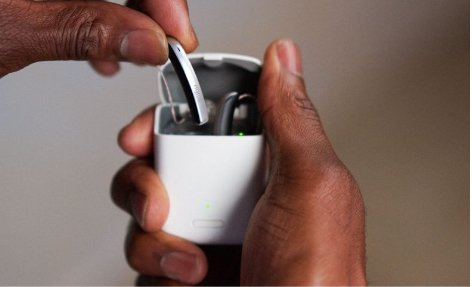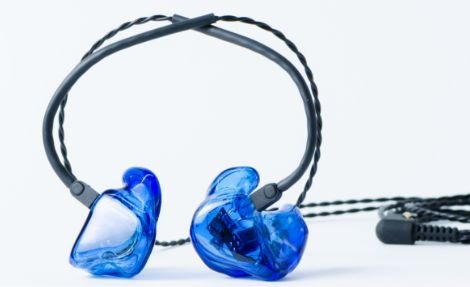

If a hearing aid or device is necessary for your hearing journey, our experts will guide you to the best solution. We offer the latest hearing technology and products that address a wide variety of hearing loss concerns, helping you reconnect to the world around you.
Thanks to advances in technology, hearing products are designed to be more compatible with our lives than ever before. In addition to hearing aids, there are a number of products that make living and communicating with hearing loss easier to manage, so you never miss a beat.

Hearing aids equipped with Bluetooth allow wearers to wirelessly and seamlessly connect their devices to other electronic objects, including: FM systems, cell phones, televisions and stereos.
There are a number of benefits to purchasing cell phone accessories for your hearing aids. These enable you to enjoy your devices hands-free and usually include a custom earmold or Bluetooth.
Depending on the severity of your hearing loss and personal needs, there are several different hearing aid styles to choose from. These styles include: in the ear, invisible in canal, completely in canal, in the canal, full shell, behind the ear, mini behind the ear with slim tube and tip, receiver in the ear and behind the ear with earmolds.
When it comes to hearing loss, you need a device you can rely on to perform its best. That’s why we carry products from manufacturers with a proven track record of exceptional quality. No matter your budget, lifestyle or type of hearing loss, we have a product to meet your needs.

ReSound provides excellent sound by offering innovative hearing solutions that combine original thinking and design with solid technology – all based on deep audiological insight and understanding of hearing aid users.

Signia offers a broad range of hearing aids for every lifestyle and all configurations of hearing loss—including completely invisible, waterproof, and rechargeable hearing aids. Signia also has a complete line of wireless accessories that connect hearing aids wirelessly to mobile phones, TVs, MP3 players, and other audio devices.
As one of the leading manufacturers in hearing aid technology, Oticon focuses on a people-first approach when developing and designing their hearing products. They seek to empower individuals with hearing loss to lead full and active lives.

Starkey Hearing Technologies strives to do more than produce highly advanced hearing aids, they want to impact the everyday lives of their users. By offering a number of different hearing products, Starkey helps individuals reconnect with the world around them.

Widex has dedicated years of research to understanding how hearing loss impacts each person individually. This has enabled the manufacturer to develop a number of innovative hearing solutions, in addition to the world’s first fully digital in-the-ear hearing aid.
Protecting your ears from noise damage is essential to healthy hearing. We carry a wide variety of options equipped with the latest features and customizations, so you can find the best fit for your lifestyle.
One of the top ways to prevent hearing loss is by utilizing proper hearing protection. We offer a variety of earplugs, earmolds and other custom solutions to keep your ears safe around loud sounds. These items include: earplugs and earmolds for hunting, music and swmming, iCustom, DefendEar 1, DefendEar 2 and DefendEar Hunter.

You don’t have to rely on hearing aids alone; assistive listening technology and compatible devices can help bring more clarity to conversations and are another great way to foster healthy communication and connections.

©2025 Adirondack Audiology Associates. All Rights Reserved